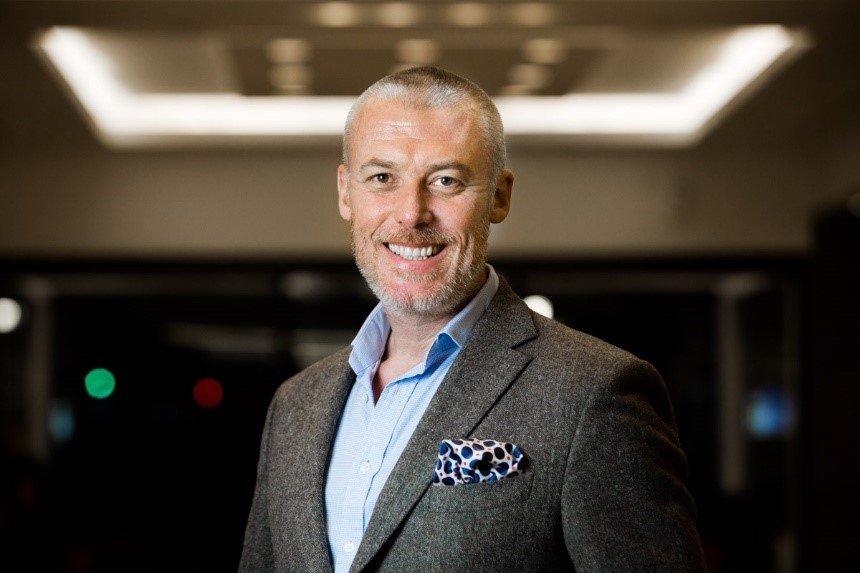Dr Andrew Sharman has spent much of his career as a health and safety professional, a leadership consultant and a best-selling author, persuading organisations to take a new approach where safety is not the just about trying to limit the risk of accidents and ill health. Instead, Andrew wants businesses to view safety as a positive state to be believed in, and promoted by everyone, if it is to be sustainable and successful.
“Safety culture can only develop when everybody is pulling in the same direction,” Andrew says. “Good occupational health and safety cannot just be the responsibility of a dedicated health and safety function; it has to belong to everyone in a business from the C-suite to the shopfloor.”
Andrew’s belief, set out in his book From Accidents to Zero and elsewhere, is that there is a place for the traditional levers of trying to learn from and reduce accidents and unsafe conditions, but it is not enough. A robust safety culture is grown by actively promoting a sense of collective responsibility, of people working together and looking after each other.
The tone for that culture has to be set by the leaders, and this approach is at the heart of the CEDEP L&SC programme. “Building safety into the DNA of an organisation, and the people working in it, is our key focus. Leaders’ actions and words are the foundation of creating safety,” he says.
Safety number one priority
When it comes to fostering a safety culture, many organisations take a wrong turn in talking about safety as their “number one priority”. This sounds impressive but it externalises safety as something to be managed rather than fundamental to the business. “It can’t be a priority,” Andrew says. “It has to be a value and embedded in everything we do, rather than something that shifts up and down the priority list.”
Leaders can compound this mistake when they talk about safety and health in more detail, he notes. “Most leaders start with what: they tell people to be safe. They might also cover the how, for example, “Be safe, wear your harness, hold the handrail”. But that’s not leadership, it’s just telling people what to do. For too long, there has been too much of that language from leaders: “all accidents are preventable” and “safety is a prerequisite of working here”. It’s quite authoritarian,” he says.
Start with why
Instead of the what and how, Andrew endorses the motivational speaker Simon Sinek’s recommendation that leaders start with why. This involves articulating what makes it important to them personally.
“My why is because my best friend died in a forklift truck accident, I watched it happen and was helpless,” Andrew says. “That’s why I am interested in safety.”
Establishing the why for each of the L&SC Programme participants is the focus of one of the first sessions he leads. He finds leaders’ first responses to the why question may be a stock, formulaic one: “Because safety is our top priority”.
“But encouraging them to dig deeper during the session allows them to find and articulate the more personal reasons, rooted in their own experience. Perhaps the opposite of a formulaic response is an authentic one. And that response is what forms the foundation of authentic safety leadership,” he says.
“Re-engaging leaders to think about why safety is important to them at a personal level and then having the courage, the vulnerability and the authenticity to share that why is important.”
People-centred approach
If authentic engaged leaders are one of the foundations of a safety ethos owned by the whole workforce, a people-centred approach to the employment relationship is another.
Before the pandemic, Andrew interviewed the celebrated management philosopher and anatomist of organisational culture Charles Handy, and says they explored why businesses persist in talking about their employees as human resources.
“He said it shouldn’t be HR, short for human resources, because we shouldn’t treat people as resources,” Andrew recalls. “It should be RH for resourceful humans. Respecting employees as individuals and encouraging them to take responsibility for themselves and each other is the key to getting them to create safety.
“It’s that ‘my brother’s keeper’ idea that we care about each other so much we are looking out for each other and watching each other’s backs. And this is central to my way of working: repositioning safety to be about the people rather than the performance or the process,” he says.
Shared purpose
But how do you know when you have achieved this kind of active shared safety culture, since absence of accidents and incidents is only one part of the picture? Andrew says there will be other forms of evidence you are getting it right.
“It shows in a sense of pride around the procedural part of safety which occurs when engaged people build the procedures and documentation for themselves, rather than the OSH department developing them and handing them to the workforce to follow,” he says. “Ultimately it’s about discussing health and safety in the workplace and not being greeted by a groan.”
Maintenance regime
Maintaining this kind of culture, where safety is defined by the presence of positive inputs and attitudes to risk management, rather than simply the current absence of negatives measured in accidents and ill health, involves making safety discussions habitual. According to Andrew, safety moments in meetings and point-of-task discussions about potential risk must be part of work routines even when everything seems to be going smoothly.
“Keeping health and safety at the centre of organisational thinking also means keeping its definition dynamic, so as higher-level risks are brought under control, its scope stretches to take in issues such as mental health and individual wellbeing,” he says.
“The best argument for everyone pulling together to create safety is that everyone in an organisation is there with the shared purpose of making the business efficient and successful. And that’s when we see that good safety is good business.”
